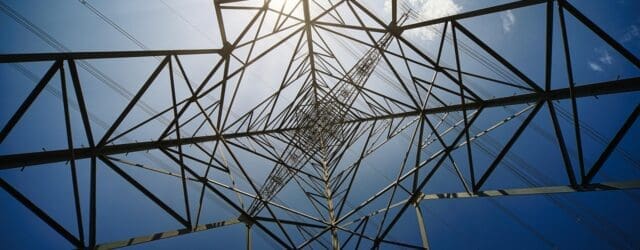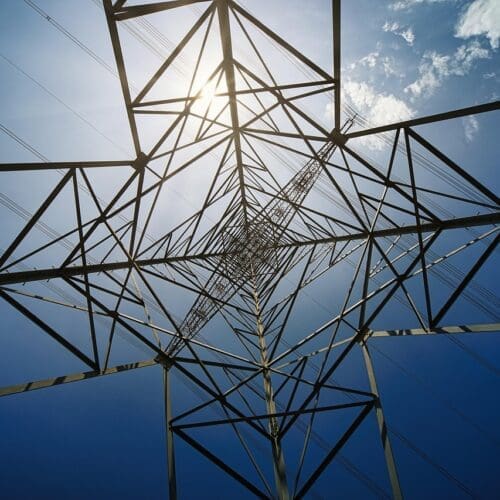How TMO4+ is changing UK grid connections and accelerating net zero
July 2025According to Ofgem and the National Energy System Operator (NESO), the UK’s journey to net zero has been held back by the traditional electrical grid connection system, which has led to significant delays in getting projects connected to the grid. Reports have found that thousands of renewable energy projects have stalled in the grid connection queue, many based on apparently speculative or unviable schemes – a common view is that the need for major overhaul has become undeniable. To combat these issues, on 15 April 2025 Ofgem approved TMO4+ (Target Model Option 4+).
The intention of TMO4+ is to accelerate the UK’s net zero transition by up to a decade. However, there are likely to be significant implications upon contractors, consultants, developers and funders as to project viability, delay and contractual risk.
The problem: a gridlocked system
In January 2025, an estimated 770GW of generation capacity was sat in the grid connection queue, totalling more than is needed to meet the country’s net zero goals. However, due to flaws in traditional grid connection procedures, some shovel-ready renewable energy projects have found themselves at the back of the line due to the first-come, first-served approach currently in place. Under this traditional approach, if your project signs a connection contract after another project, that other project will be connected to the grid first, even if yours is complete and ready to go first.
This allows speculative projects, such as those which do not have necessary land rights or planning consent, to reserve queue positions indefinitely. Low barriers to entry and minimal requirements for retaining a queue spot have led to backlog of paper-only projects. This has also unnecessarily increased grid reinforcement costs.
This first-come, first-served procedure works relatively well for traditional power projects, in which relatively few large power stations require little additional infrastructure work for grid connection. However, this procedure has not fared well with the shift to renewable energy. Projects such as wind farms and solar arrays often face planning objections, leading to delay in net zero projects leaving the grid connection system and blockages for the pipeline of projects. For instance, completion of more remote projects may be held up due to unforeseen ground conditions and inclement weather and may require additional infrastructure work to connect to the grid.
The solution: TMO4+ reform
TMO4+, approved on 15 April 2025, replaces the outdated system with a new principle: “First ready, first needed, first connected.”
It introduces a gated process that ensures only projects demonstrating real progress can move through the queue. Projects must satisfy Readiness Criteria and Strategic Alignment Criteria, with regular progress checks to maintain queue position.
Key features of TMO4+
- Mandatory proof of land rights: freehold, leasehold ≥ 20 years, or purchase option agreements exercisable for ≥ 3 years
- Evidence of planning progress: including DCO applications or other relevant planning permissions
- Gated application process
- Gate 1: initial assessment, requiring landowner consent and competency review
- Gate 2: confirms project readiness and alignment with national energy strategy
- Queue prioritisation: based on readiness and strategic value
- Firm connection dates: allocated only after Gate 2 approval
Readiness criteria
Whether a project is ‘ready’ can be demonstrated by obtaining land rights or by submitting and validating an application for planning consent under a Development Consent Order. This provides two routes for readiness criteria:
- Land rights: projects need evidence of secured land rights, along with a red-line boundary for the secured land setting out the demise. Projects will have to demonstrate that the land available meets the minimum acreage requirements for the technology type.
- Planning: projects need evidence of a valid application for planning consent under a Development Consent Order or other planning process required for compulsory purchase orders.
Strategic alignment criteria
Projects must:
- be eligible for Relevant Protections[1], which apply to projects with existing agreements, including contracted to connect by end of 2026 and projects that are significantly progressed,
- align with the Clean Power 2030 Action Plan, or
- be designated by NESO. NESO can designate projects that will provide significant benefit to electricity consumers, including but not limited to:
- projects that are critical to security of supply of system operation,
- projects that reduce network constraints, and
- long lead time projects.
For projects that were in the queue prior to the introduction of TMO4+, those that fail to meet the Gate 2 criteria may be removed from the queue altogether. Unsuccessful projects can apply for Gate 2 status in subsequent application windows, along with new projects. Projects which are unsuccessful in obtaining Gate 2 status, or that were given a later connection date than requested, may be able to fill gaps if other projects already in the connection queue terminate their connection agreements.
Future risks
The connection grid reform seeks to create a fairer system for all. TMO4+ applies retroactively and existing projects in the queue must also demonstrate Gate 2 compliance, or risk either being downgraded to Gate 1 status or removed from the queue. The aim is to:
- ensure that the queue reflects real, viable projects, freeing up capacity for genuinely ready developments and removing ‘zombie’ projects from the queue;
- accelerate rollout of clean energy projects;
- avoid unnecessary infrastructure upgrade works and the associated costs;
- boost investor confidence in the UK renewables market; and
- support grid efficiency and security of supply.
The Gate 1 and Gate 2 compliance scheme will be administered by the NESO and Ofgem, as the energy regulator, has a statutory role in resolving any issues related to the grid. If a Gate 1 or Gate 2 applicant is dissatisfied with a NESO decision, then a complaint can be made to Ofgem which can review the decision. As a statutory regulator, a subsequent decision made by Ofgem can be challenged through judicial review.
There is the opportunity for consultants to take on new work advising developers on progress through the Gate 1 and Gate 2 systems. Any consultant doing so, or even just reporting on project progress, will need to think carefully about the types of liabilities that it is exposing itself to, and negotiate an appropriate liability regime in its appointment. Developers may look to pass on the consequences of the delayed grid connections to their construction teams, potentially through liquidated damages or gainshare/painshare mechanisms.
The developments come with some important risks. Projects may lose their place in the queue, which may lead to delays to completion and affect funding agreements, which may be based upon anticipated completion dates. Consequent delays to commencement of power generation and realising revenue from this could have significant financial consequences for developers.
The new regime gives rise to the possibility that a connection contract could be repeatedly pushed down the queue if the relevant criteria are judged not to have been met. This raises the question of bankability of power generation projects. A grid connection contract with a specified connection date has historically been seen as fundamental to a project’s security package. Losing that certainty will likely mean that these projects are seen as riskier, with the potential for funding for new projects to be more difficult to obtain and/or subject to more conditions, covenants and milestones.
Projects with Gate 2 status will have to meet certain obligations. A failure to meet these obligations may result in termination or amendments to connection offers. Projects in the queue will be subject to meeting queue management milestones to retain their connection offer and queue position. This includes a Progression Commitment Fee (a penalty fee for projects in the Gate 2 queue failing to meet queue management milestone 1), set at £2,500/MW, increased by £2,500/MW every 6 months up to a cap of £10,000/MW. Projects will also be required to meet queue management milestones, set by the NESO, to retain their connection offer and position in the queue. If they fail to meet this, then they may be removed from the queue.
Key dates to watch
- 8 July 2025: Gate 2 application window opened for CMP435 (existing connection queue contracts) transmission projects
- September 2025: NESO notifies successful applicants of queue position and Gate 2 offers
- Autumn 2025: Issuance of initial Gate 2 connection offers for 2026/27 projects
- End 2025: Next Gate 2 window opens for new applications
- Early 2026: NESO aims to issue all CMP435 Gate 2 offers for connections through to 2030
TMO4+ represents one of the most significant shifts in UK energy regulation in decades. By aligning grid access with project viability and national energy priorities, it sets the foundation for a smarter, faster, and cleaner power system. However, as with all changes, it also gives rise to risks, which all market participants must be aware of and must manage.
If you require advice on TMO4+, or any advice on your energy infrastructure projects, please contact the authors and our Construction, Engineering and Infrastructure team.
[1] Projects contracted to connect by end of 2027; projects which are significantly progressed (e.g. planning applications submitted by 20 December 2024, contract for difference or capacity market contracts; projects which applied for planning prior to 20 December 2024, but consent was obtained after.
Download PDF








